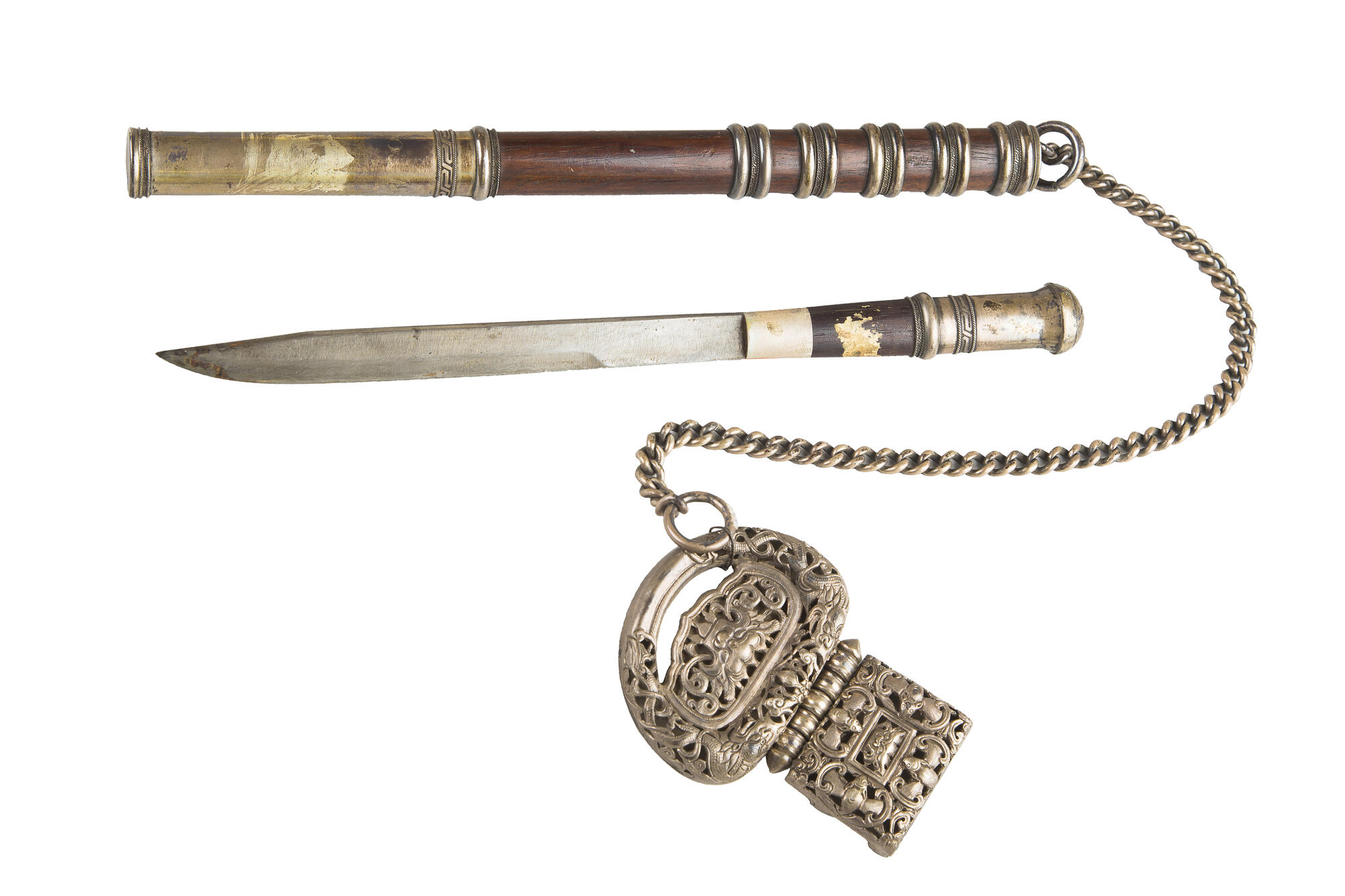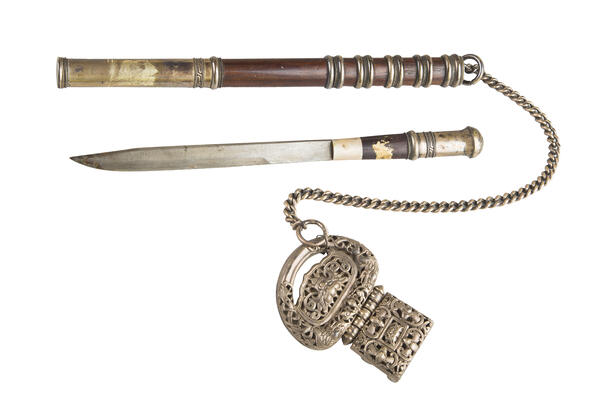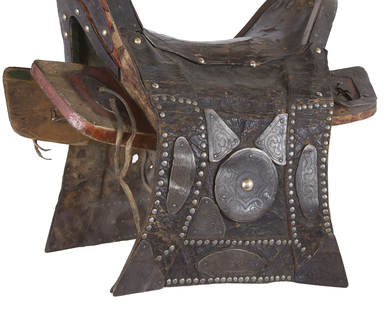A knife was an element of the traditional Buryat male costume. However, both men and women wore it: the tool was necessary in everyday life. The sheath was attached to the belt with a pendant chain. The first Buryat knives were used for domestic purposes only — for butchering livestock and cutting up meat.
For slaughtering, nomadic tribes used an ancient method: the master would stab the blade sharply into the narrow place at the base of the skull so that the animal would not have time to become frightened. Knives were created with special blades for a more precise strike: long, straight and narrow. In addition, sharp knives were used to carve the carcass, to skin and to separate joints.
Over time, the Buryats developed new tools for household chores, and the knife became a decorative item. The sheath and handle were adorned with metal plates, semi-precious stones and embossed patterns. Knives were decorated with silver and, less often, with melchior. Buryat tribes did not use gold, as it was an expensive metal which was to find.
The Buryat knife was carried on a belt with a tinder-box, used to start a fire, which consisted of a firesteel (fire striker), a piece of flint and tinder. To ignite a fire, the owner hit the fire striker against the rock, the metal became heated and sparks appeared. The sparks had to fell on the tinder — pieces of paper, cotton, moss and other materials that are easily flammable — to start a small fire.
The flint and tinder were kept in a flat leather pouch similar to a purse. It was small: about 4 to 5 centimeters in length and 7 to 10 centimeters in width. It had a steel fire striker attached to the bottom.
The front side of the bag was decorated with silver plaques with embossed patterns. Most often, these were images of animals, plants and geometric patterns.
In Buryat tribes, it was customary to hand down the knives from generation to generation. When a son was born, his father would commission a knife for him to pass on to his children. The tool was considered a symbol of the owner’s soul and life energy. Therefore, the item could not be given or passed on to other people.
For slaughtering, nomadic tribes used an ancient method: the master would stab the blade sharply into the narrow place at the base of the skull so that the animal would not have time to become frightened. Knives were created with special blades for a more precise strike: long, straight and narrow. In addition, sharp knives were used to carve the carcass, to skin and to separate joints.
Over time, the Buryats developed new tools for household chores, and the knife became a decorative item. The sheath and handle were adorned with metal plates, semi-precious stones and embossed patterns. Knives were decorated with silver and, less often, with melchior. Buryat tribes did not use gold, as it was an expensive metal which was to find.
The Buryat knife was carried on a belt with a tinder-box, used to start a fire, which consisted of a firesteel (fire striker), a piece of flint and tinder. To ignite a fire, the owner hit the fire striker against the rock, the metal became heated and sparks appeared. The sparks had to fell on the tinder — pieces of paper, cotton, moss and other materials that are easily flammable — to start a small fire.
The flint and tinder were kept in a flat leather pouch similar to a purse. It was small: about 4 to 5 centimeters in length and 7 to 10 centimeters in width. It had a steel fire striker attached to the bottom.
The front side of the bag was decorated with silver plaques with embossed patterns. Most often, these were images of animals, plants and geometric patterns.
In Buryat tribes, it was customary to hand down the knives from generation to generation. When a son was born, his father would commission a knife for him to pass on to his children. The tool was considered a symbol of the owner’s soul and life energy. Therefore, the item could not be given or passed on to other people.



